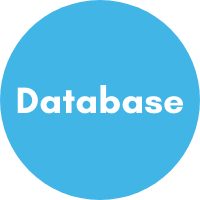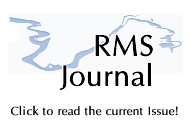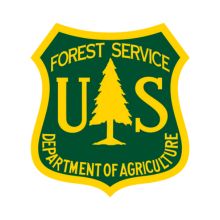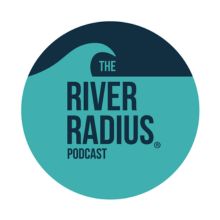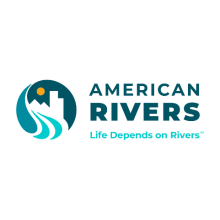- Home
- About
- Training & Events
- Resources
- For Members
River Access Planning and DesignRMS, in partnership with several other organizations, is proud to provide the following resources which support your work developing and improving river access points and boat launches! Prepare to Launch!Guidelines For Assessing, Designing & Building Access Sites For Carry-In WatercraftPrepare to Launch! is a resource designed to help facility and trail planners and park and recreation project leaders plan and build or update an access site tailored to the needs of canoeists, kayakers, tubers, stand-up paddlers, or small craft sailors. It guides a reader through the development process from conception to design creation, and provides a variety of launch construction options. View the guide in four formats:
Prepare to Launch! is a joint project of the National Park Service Rivers, Trails, Conservation Assistance (RTCA) Program and the River Management Society, and is an update to Logical Lasting Launches. RMS and NPS appreciate and thank the river users, managers, and professional staff across the country who have contributed to this updated guide. Enjoy, learn and let us know what you think of this collaborative effort! River Access Planning GuideA Decision-Making Framework for Enhancing River AccessRiver Access Planning Guide is a document that provides a step-by-step process to planning for river access with recreation users in mind. The planning guide intends to serve as a resource for planners, river managers, and users as they approach site selection and design to establish new river access or improve existing access. The thoughtful planning and design supported by the planning guide will benefit public resource agencies, river managers, and private entities responsible for providing waterway access. View the Guide in one of two versions:
The development of the River Access Planning Guide is a result of partnership between numerous nonprofit organizations and agencies. Contributors include the National Park Service, the Bureau of Land Management, the United States Forest Service, American Whitewater and River Management Society. Over the past few years, the National Park Service and partners have supported a number of projects that address design and planning for waterway access. River Access Planning Guide Worksheets, companions to the Guide itself, are fillable forms that feature reminders of the Guide's Planning Steps, helpful questions and prompts, and examples to guide the development of notes, sketches, and references to the suggested iconography that will inform design criteria and concepts. River Access Planning Guide Worksheets are fillable PDFs that can be used offline and in printed form.
Looking to share the River Access Planning Guide? Check out the infographic for the Guide here. The Good, the Bad and the Unusual: What Makes a Boating Access Work (or Not)?Summary information about a working database of representative river-based boat launches across the countryAuthors: Dan Shelby, Doug Whittaker, and Bo Shelby In October 2020, Confluence Research and Consulting (in partnership with the National Park Service, River Management Society and American Whitewater) released a report highlighting examples of 269 boat launches from a wide range of locations, geographic settings, amounts and kinds of use, and types of facilities. “The Good, the Bad and the Unusual: What Makes a Boating Access Work (or Not)?” is the first iteration of a national river access database. “The project objective was to review, organize and document a database of example launches serving different recreation opportunities, types of craft and environmental settings,” explains Confluence Researcher and Planner Doug Whittaker. “The ‘Good, Bad and Unusual’ database will help stakeholders and planners review relevant examples of launch sites and encourage innovative new designs and facility improvements. Analysis made possible by this data may also help planners working with complex planning processes such as the licensing of federally regulated facilities and comprehensive river management plans.” This report offers a welcome complement to the 2018 e-book “Prepare to Launch!” by the River Management Society (RMS) and National Park Service (NPS). It is also an excellent partner resource to the 2020 “River Access Planning Guide” published by NPS, RMS and American Whitewater. “We hope that along with our previous river access guides, this data will provide solutions to common parking and staging issues, ultimately creating a better experience for all boaters,” notes Susan Rosebrough, Hydropower Assistance Team Lead, NPS Conservation and Outdoor Recreation Programs. “While there is no single ‘best’ design for a boat launch, this report explains how to successfully match facilities and management to the unique demands presented by various locations and types of usage.” The Good, Bad, and Unusual database is a spreadsheet listing access sites and characteristics, with each site identifiable by a unique number. Examples of these characteristics are:
An accompanying photo gallery includes 80 photos from representative examples of different types of launches, features, or issues with extended captions summarizing key findings from the report. Peering into the world of non-motorized recreational boatingA review of river access in the United States, 2013-2022StoryMap developed in 2022 by Karyna Kloude, River Management Society The River Management Society conducted a survey in Fall 2022 gathering recreational boating data on regulatory, financial, and demographic trends to draw a rough sketch of river access outlooks in the United States, now available in a StoryMap. It can help river enthusiasts and managers alike expand their understanding of river access as it pertains to the growing community of non-motorized recreational boaters. Key Insights
Access the StoryMap |



